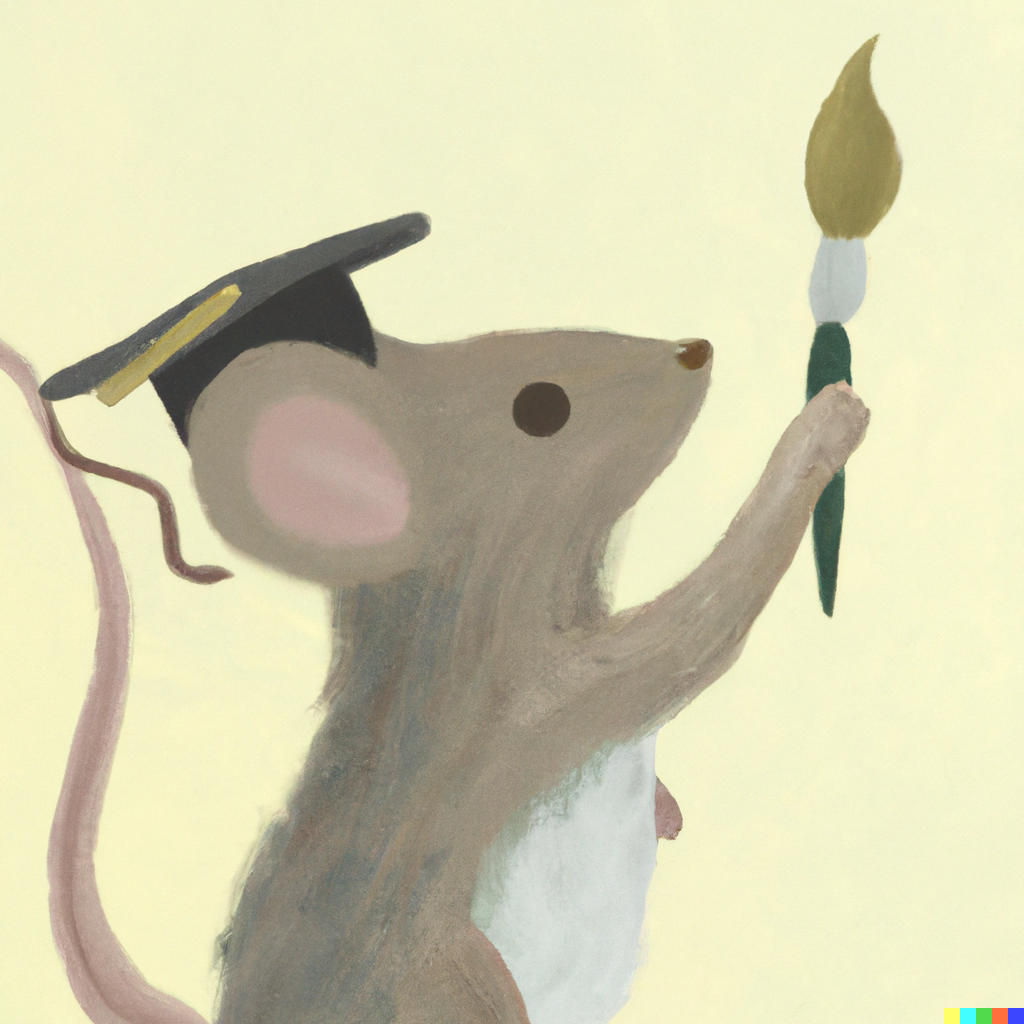A Comprehensive Guide: the MFA degree
Are you interested in getting an MFA (Master of Fine Arts)?
Here’s a detailed and comprehensive guide to the MFA (Master of Fine Arts) degree.
Do I need an MFA to be an artist?
No, of course not. It makes it a whole lot easier, though. I credit my formal education with any artistic success I have achieved, such as landing exhibitions or getting hired for jobs in the art world. Though I didn’t get an MFA, I have about 8 years of formal, higher education in the arts. Instead of an MFA, I completed an MA in Critical Studies. But, I am a strong believer in pursuing higher education in the arts.
Having said that, many artists never took on debt to get an MFA (or even a BA), yet they were very successful. Personally, I don’t know anyone like this. However, I have many friends who pursued their MFAs and carved out a niche for themselves teaching and producing art professionally as a result.
Table of Contents
- Introduction to the MFA Degree
- Understanding the Purpose of an MFA
- Areas of Study in MFA Programs
- Choosing the Right MFA Program
- Admission Requirements for MFA Programs
- Duration and Structure of MFA Programs
- Curriculum and Coursework in MFA Programs
- Faculty and Mentorship in MFA Programs
- Thesis or Final Project in MFA Programs
- Funding and Financial Assistance for MFA Programs
- Pros and Cons of Pursuing an MFA Degree
- Career Opportunities and Post-MFA Paths
- Frequently Asked Questions (FAQs)
1. Introduction to the MFA Degree
What does the MFA really mean? The Master of Fine Arts (MFA) is a terminal degree in the field of fine arts, creative writing, and other artistic disciplines.
That means you can’t study further than an MFA in the visual arts. In other words, teaching art at the college level in the United States does not require a PhD; it requires an MFA.
In Europe, a Ph.D. in Visual Arts is common. There are also some Ph.D. programs in the visual arts in the USA now, but it is uncommon for practicing artists to pursue a Ph.D.
If you have an MFA, it means you have completed a graduate-level program at a university. This graduate program should have taught helped you deepen your artistic practice through studio visits and giving you access to studio space and equipment and improved your ability to engage in critical analysis of your work through lectures and rigorous graduate-level course content in art history or related humanities fields.
2. Understanding the Purpose of an MFA
An MFA degree’s primary purpose is to allow artists and creative individuals to refine their artistic skills, expand their creative vision, and develop a body of work that demonstrates their artistic competence. It is a specialized degree that focuses on a discipline’s artistic and creative aspects rather than a purely academic or research-oriented approach.
3. Areas of Study in MFA Programs
MFA programs are available in a wide range of artistic disciplines, including but not limited to:
- Creative Writing: Fiction, Poetry, Non-fiction, Playwriting, Screenwriting
- Visual Arts: Painting, Sculpture, Printmaking, Photography, Ceramics, Installation Art
- Performing Arts: Theater, Dance, Acting, Directing, Choreography
- Film and Media: Film Production, Digital Media, Animation, Documentary, Video Art
- Design: Graphic Design, Industrial Design, Fashion Design, Interior Design
- Music and Sound: Composition, Music Performance, Sound Design
4. Choosing the Right MFA Program
When choosing an MFA program, consider the following factors:
- Reputation and Accreditation: Research the reputation of the program and institution. Look for accreditation from reputable accrediting bodies. Here are ten well-regarded Master of Fine Arts (MFA) programs known for their excellence in the arts:
- Yale School of Art (Yale University) – New Haven, Connecticut, USA
- Royal College of Art – London, United Kingdom
- Rhode Island School of Design (RISD) – Providence, Rhode Island, USA
- School of the Art Institute of Chicago (SAIC) – Chicago, Illinois, USA
- California Institute of the Arts (CalArts) – Valencia, California, USA
- Cranbrook Academy of Art – Bloomfield Hills, Michigan, USA
- Goldsmiths, University of London – London, United Kingdom
- Columbia University School of the Arts – New York, New York, USA
- University of California, Los Angeles (UCLA) – Los Angeles, California, USA
- Glasgow School of Art – Glasgow, Scotland, United Kingdom
- Faculty: Review the qualifications and experience of the faculty members. Check if they are actively involved in their respective fields and if their expertise aligns with your artistic goals.
- Alumni Network: Consider the success and achievements of the program’s alumni. A strong and supportive alumni network can provide valuable connections and opportunities.
- Facilities and Resources: Evaluate the quality of the facilities, studio spaces, equipment, and resources available to students in the program.
- Location: Consider the location of the program. Certain locations may offer unique artistic opportunities, exposure to cultural institutions, or access to specific artistic communities.
- Program Focus: Examine the program’s curriculum and course offerings to ensure they align with your artistic interests and goals.
- Size and Class Structure: Consider the size of the program and the student-to-faculty ratio. Some students prefer smaller, more intimate programs, while others thrive in larger, more diverse settings.
5. Admission Requirements for MFA Programs
Admission requirements vary across institutions and programs. However, common requirements for MFA programs include:
- An application form with personal information and educational background
- A statement of purpose outlining your artistic goals and why you wish to pursue an MFA degree
- A portfolio of your creative work showcasing your artistic skills and potential
- Letters of recommendation from individuals who can speak to your artistic abilities and potential
- Transcripts from previous educational institutions
- A CV (curriculum vitae) highlighting your artistic and professional experiences
- The GRE or other standardized test scores may be required for some programs
- An interview or audition (for performing arts programs)
Reviewing the specific admission requirements for each program you are interested in and preparing your application accordingly is essential.
6. Duration and Structure: how long does an MFA take?
MFA programs typically require two to three years of full-time study to complete. Some programs offer part-time or low-residency options (like the School of the Art Institute of Chicago) to accommodate students with other commitments.

The structure of MFA programs can vary as well. Some programs follow a studio-based model, where students spend significant time creating artwork in their chosen discipline. Other programs may combine studio work with seminars, workshops, and critical discussions.
7. Curriculum and Coursework in MFA Programs
The curriculum and coursework in MFA programs are designed to provide students with a comprehensive understanding of their chosen artistic discipline while allowing them to develop their creative voice.
As such, your MFA programs will probably include:
- Studio Courses: These courses form the core of the program, where students engage in hands-on, creative work under the guidance of faculty mentors. They have access to studio spaces, equipment, and resources relevant to their discipline.
- Workshops and Critiques: Students participate in group workshops and critiques, where they present their work in progress to receive feedback from faculty and peers. This collaborative environment fosters artistic growth and development.
- Seminars and Theory Courses: These courses explore the theoretical and historical aspects of the discipline, fostering critical thinking and providing students with a broader understanding of their field.
- Electives: Students can choose elective courses to explore specific areas of interest further or develop interdisciplinary skills.
- Professional Development: Some programs offer courses or workshops on professional practices, entrepreneurship, grant writing, exhibition strategies, or career development.
8. Faculty and Mentorship in MFA Programs
The fastest way to form deep, helpful connections in the art world is through a graduate degree in the arts. There, you will be surrounded by professional artists who can show you the ropes. The faculty in MFA programs are experienced practicing artists. You will learn a lot from them through workshops and scheduled individual critiques. Hopefully, you will also find some lifelong mentorship through the faculty.
Mentorship is a significant aspect of MFA programs, as students often develop close working relationships with one or more faculty mentors who provide ongoing support throughout their studies and beyond. Mentors can offer valuable insights and critique, and help students shape their artistic practice and direction.
The lifelong friendships I forged during my BA in Fine Arts and my MA were the most valuable part of the degree. The piece of paper never got me anywhere, but my network got me everywhere.
9. Thesis or Final Project in MFA Programs
Many MFA programs require students to complete a thesis or final project to culminate their studies. (Here’s mine!) The nature of the thesis or project can vary depending on the discipline. For example:
- Creative Writing: Students may be required to submit a collection of poems, short stories, a novel, a memoir, or a screenplay.
- Visual Arts: Students typically produce a body of artwork for exhibition, accompanied by a written artist statement or a thesis paper.
- Performing Arts: Students may present a final performance, a choreographed piece, a directed play, or a portfolio of their work.
The thesis or final project allows students to demonstrate their artistic growth, skills, and unique creative voice.
10. Funding and Financial Assistance for MFA Programs
MFA programs are expensive. There is just no way around this. They don’t pay a stipend like a PhD would.
Do not get your MFA because you think it will lead to a high-salary teaching position. It might lead to a teaching position, but even that teaching position won’t pay you enough to cover the debt you took on. That is just reality. Graduate degree in the arts really aren’t good financial investments. In fact, any no-nonsense Dave Ramsey or FIRE devotee-type (a la Mr. Money Mustache) planner would steer you clear of any MFA.
Having saaid that, I still think an MFA is vital for any practicing artist. You should get your MFA because it is the only thing you can imagine doing: the arts. Also, it is a financial hit you can handle because you see it as a lifelong investment that will pay off in the very long run.
Even though MFAs are super expensive, various funding options and financial assistance may be available. These include:
- Scholarships and Fellowships: Many institutions offer scholarships or fellowships based on merit or need. Research the program’s website or contact the admissions office to inquire about available opportunities.
- Teaching Assistantships: Some MFA programs provide teaching assistantships where students work as teaching assistants for undergraduate courses or assist faculty with research or administrative tasks.
- Work-Study Programs: Students may be eligible for work-study programs on campus, allowing them to work part-time while pursuing their degree.
- Grants and External Funding: Explore external funding options, such as grants from art foundations, arts organizations, or government agencies, which may provide financial support for your MFA studies.
It’s crucial to research and plan ahead to understand the financial implications of pursuing an MFA degree and explore all available funding avenues.
11. Pros and Cons of Pursuing an MFA Degree
Pros:
- Skill Development: MFA programs offer intensive training and mentorship, allowing artists to refine their skills and deepen their artistic practice.
- Artistic Exploration: Students can experiment with new techniques, concepts, and interdisciplinary approaches, fostering artistic growth and creativity.
- Networking and Community: MFA programs provide a supportive artistic community where students can collaborate, exchange ideas, and build a network of peers and mentors.
- Credentials and Opportunities: An MFA degree can enhance career prospects, open doors to teaching positions in higher education, and provide opportunities for exhibitions, publications, and grants.
Cons:
- Cost: Pursuing an MFA degree can be expensive, and students must consider the financial implications and potential debt.
- Competitive Nature: MFA programs are often competitive, and admission can be challenging due to limited spots and high application standards.
- Career Uncertainty: While an MFA degree can provide artistic growth, immediate career success or financial stability in the arts is not guaranteed.
12. Career Opportunities and Post-MFA Paths
MFA graduates pursue various career paths, depending on their area of study, artistic goals, and personal aspirations. Some common post-MFA paths include:
- Professional Artist: Many MFA graduates choose to pursue careers as professional artists, working independently, exhibiting their work in galleries, and participating in art festivals and events.
- Teaching: Some MFA graduates enter academia and pursue teaching positions at colleges, universities, or art schools. An MFA degree is often a requirement for teaching positions in higher education.
- Arts Administration: Graduates may work in arts organizations, museums, galleries, or cultural institutions in roles such as curators, art directors, program coordinators, or gallery managers.
- Writing and Publishing: MFA graduates in creative writing may pursue careers as authors, poets, editors, or work in the publishing industry as literary agents or editors.
- Freelancing and Consulting: MFA graduates can work as freelancers, offering their artistic services, consulting, or working on commissioned projects.
It’s important to note that building a successful career in the arts requires persistence, dedication, and continuous self-promotion.
13. Frequently Asked Questions (FAQs)
Q: Is an MFA degree necessary to become a successful artist or writer?
A: No, an MFA degree is not a prerequisite for success in the arts. Many artists and writers have achieved recognition and success without an MFA. However, the degree can provide valuable training, mentorship, and networking opportunities.
Here are some successful artists that didn’t get an MFA:
- Jean-Michel Basquiat: Basquiat was an influential American artist known for his neo-expressionist style and graffiti-inspired works. He gained prominence in the 1980s New York art scene and achieved international acclaim without formal art education.
- Frida Kahlo: Kahlo was a renowned Mexican painter known for her introspective and symbolic self-portraits. She is celebrated for her unique artistic style and exploration of identity and received no formal training in the arts.
- Keith Haring: Haring was an American artist known for his vibrant and iconic graffiti-inspired artwork. He rose to prominence in the 1980s New York art scene and became widely recognized for his distinct style and social activism, despite not having an MFA.
- Yayoi Kusama: Kusama is a Japanese contemporary artist famous for her immersive installations, polka dot motifs, and her exploration of themes such as infinity and the self. She developed her artistic style and gained recognition through her innovative works without pursuing an MFA degree.
- Ai Weiwei: Ai Weiwei is a Chinese contemporary artist, activist, and filmmaker known for his politically charged works and his critical stance on human rights and social justice. Despite not having a formal MFA education, he is internationally recognized for his contributions to the art world.
- Marina Abramović: Abramović is a Serbian performance artist known for her groundbreaking and often physically demanding performances. She has made significant contributions to the field of performance art and has achieved international recognition without obtaining an MFA degree.
These artists are just a few examples of individuals who have achieved success in the art world without an MFA degree. Their journeys highlight the fact that formal education is not the sole path to artistic success. Ultimately, artistic talent, dedication, perseverance, and a unique artistic vision can lead to remarkable achievements, regardless of educational credentials.
Q: Can I pursue an MFA degree part-time or through a low-residency program?
A: Yes, many MFA programs offer part-time or low-residency options to accommodate students with other commitments such as work or family.
Q: Can I switch disciplines and pursue an MFA in a different artistic field?
A: Depending on the program’s policies and requirements, some MFA programs may allow students to switch disciplines. Research the specific program and consult with the admissions office to understand the possibilities.
Q: Can international students pursue an MFA degree?
A: Yes, many MFA programs welcome international students. In fact, many count on international students, paying full sticker price, to stay afloat!
Read more






